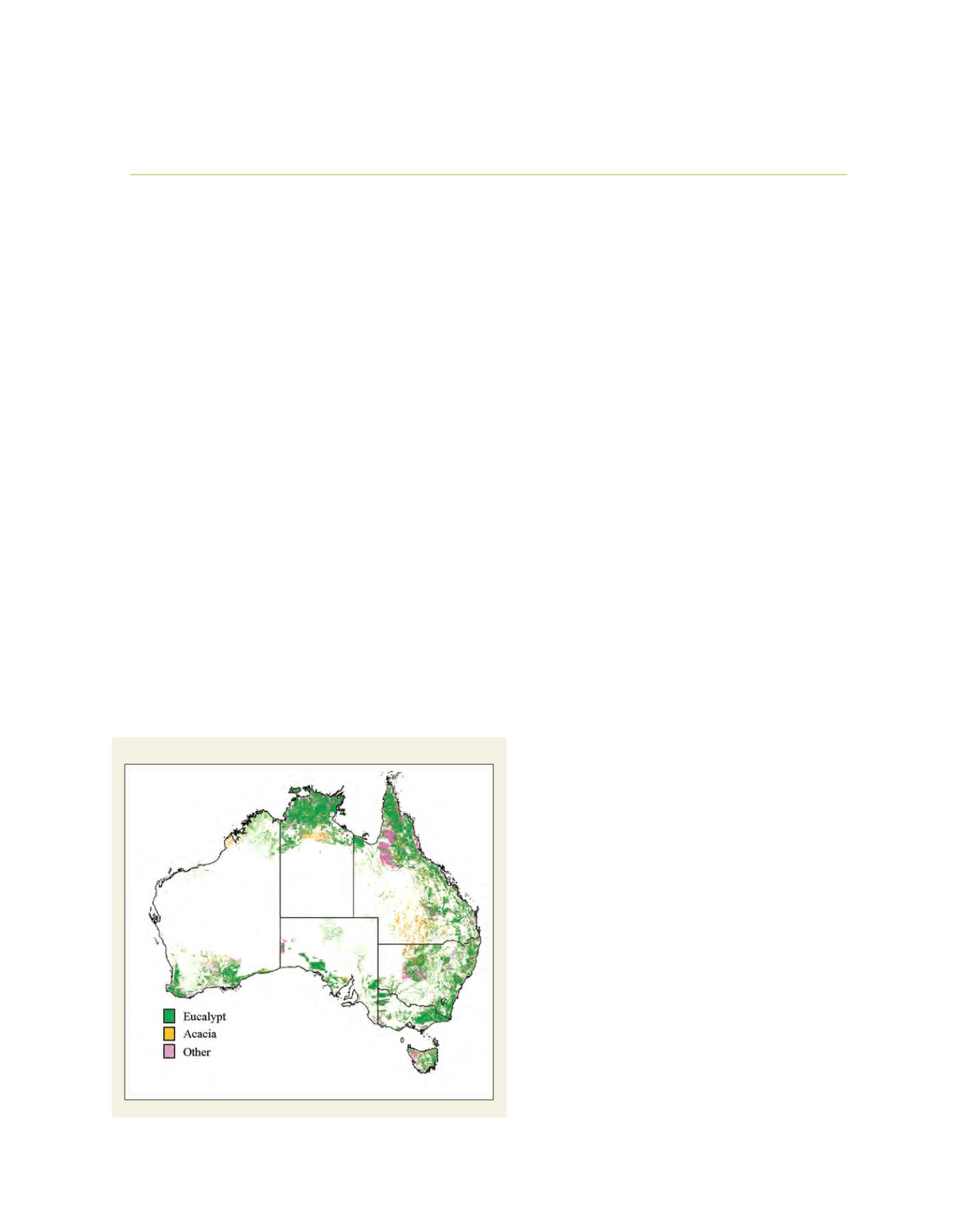

[
] 139
Sustainable forest management in Australia
Australian Government Department of Agriculture, Fisheries and Forestry
A
ustralia has a long history of forest management and use
since European settlement, dating back to the early 19th
century in native forests and the early 20th century in
plantations. Since then, Australia’s forest industry has devel-
oped into a legitimate, useful and important industry. In the
past decades, Australia’s forests have increasingly been recog-
nized and valued for the role they play in sequestering carbon,
addressing environmental degradation issues, and conserving
and providing habitat for biodiversity, as well as for their social
and cultural values. Australia’s forests also provide a sustain-
able timber product which contributes to rural and regional
employment throughout the country.
Forests occupy 19.4 per cent of Australia, equivalent to 149.4
million hectares of the country. Of this forest area, 147.4 million
hectares is native forest, dominated by eucalypt (79 per cent) and
acacia
(7 per cent) forest types and 2.02 million hectares is occu-
pied by plantations.
1
Australia is divided into six states and two
territories and both state and territory governments have consti-
tutional responsibility for forest management. The Australian
Government coordinates a national approach to sustainable forest
management.
Forest policy in Australia
Successive Australian, state and territory governments
have sought to implement the vision of ecologically
sustainable management for Australia’s forests and
plantations.
The National Forest Policy Statement, which was
finalized in 1992, brought together the vision shared
by successive Australian, state and territory govern-
ments to manage Australia’s forests and plantations
in an ecologically sustainable manner. Eleven broad
national goals constitute the statement, which provides
a robust framework for the holistic management of
forests in Australia. The statement resulted in the
establishment of a comprehensive reserve system for
Australia’s forests and provides continued support for a
range of innovative, competitive and sustainable forest-
based industries. These industries use forests and their
resources in an efficient, environmentally responsible
manner and are responsive to community and market
signals. The statement continues to have relevance and
underpins Australia’s forest management to this day.
In developing and implementing the National Forest
Policy Statement, governments were mindful of the
important conservation values of Australia’s forests,
and of the contribution that forest-based activities
make to the national economy and rural and regional
communities. This is reflected in the Regional Forest
Agreements which are a key mechanism developed to
achieve several outcomes of the statement.
Regional Forest Agreements are 20-year agreements
between the Australian Government and state govern-
ments for a balanced and sustainable approach to
managing Australia’s native forests.
The 10 Regional Forest Agreements, currently imple-
mented in four states, have three key objectives:
• To protect environmental values and a world-class
system of national parks and other reserves
• To manage all native forests in an ecologically
sustainable way
• To encourage job creation and growth in forest
based industries, including wood products, tourism
and minerals.
The Regional Forest Agreement process was initiated
with scoping agreements to identify key government
obligations, regional objectives and interests, and broad
forest uses. Criteria for a comprehensive, representa-
Australia’s forest cover
Source: Australian Bureau of Agricultural and Resource Economics and Sciences
















